
Visit “Wieliczka” Salt Mine
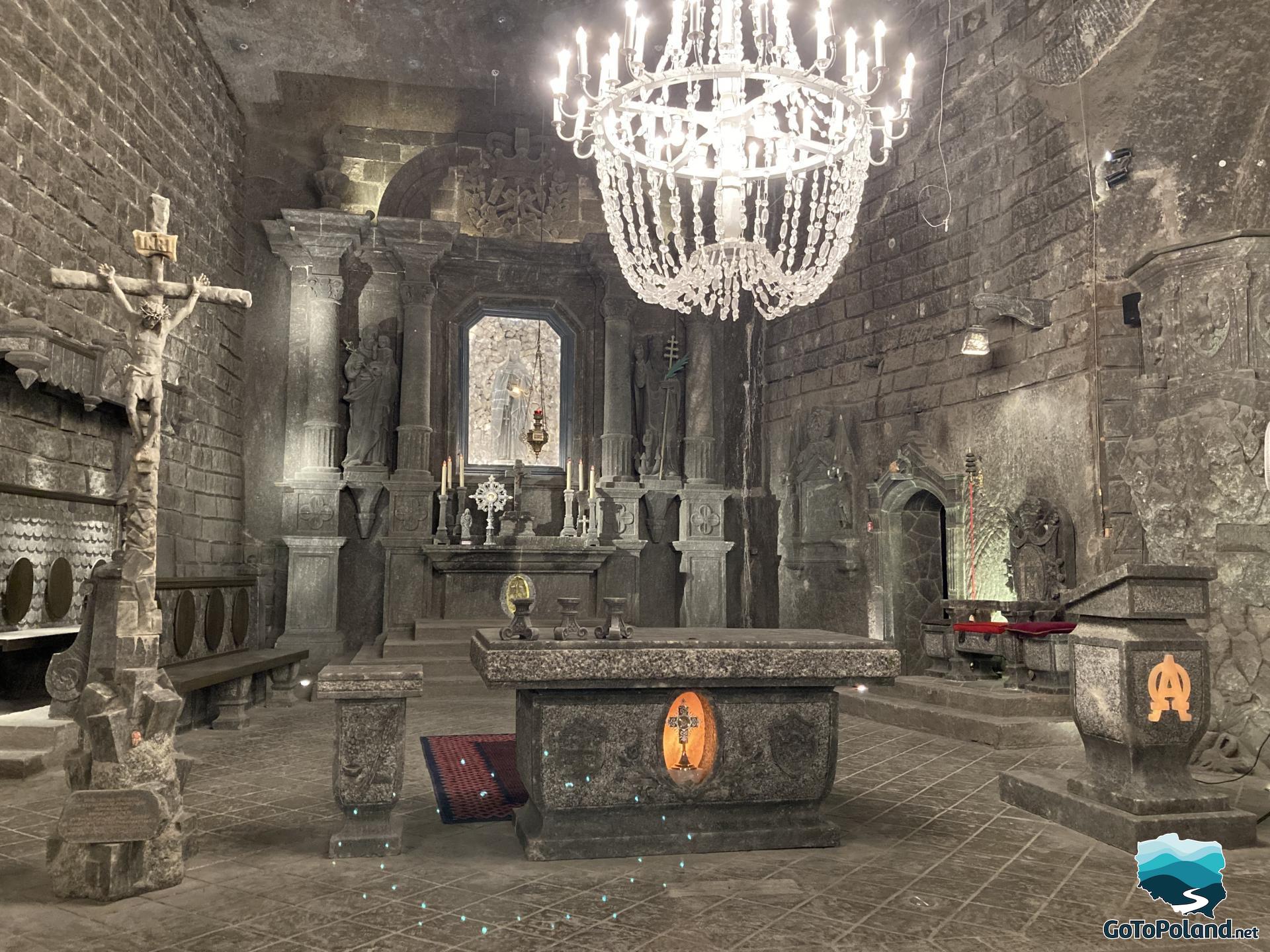
I was afraid of this trip, a lot. I'm claustrophobic, and suddenly you have to go underground and how deep! However, I reassure everyone, it is possible and what emotions it brings! A priceless monument inscribed on the first UNESCO World Heritage List, it is simply a must see. I've never been to a mine like this, actually I've never been to one. But I always associated the mine with narrow, barely lit corridors, stone ceilings that hang over your head, lack of air and the possibility of rockslides at any moment. Nothing could be more wrong. In the “Wieliczka” Salt Mine you will find wide, well-lit corridors, incredibly high corridors, large salt chambers, many carved figures, a pond, toilets, even a restaurant and, of course, lots of tourists. Fortunately, they are scattered and follow their guide. Maybe you won't believe me but you can spend a night there. It's true. Accommodations is possible in Słowacki Chamber or Eastern mountain Stables Chamber (everything is written on the official website of the “Wieliczka” Salt Mine).
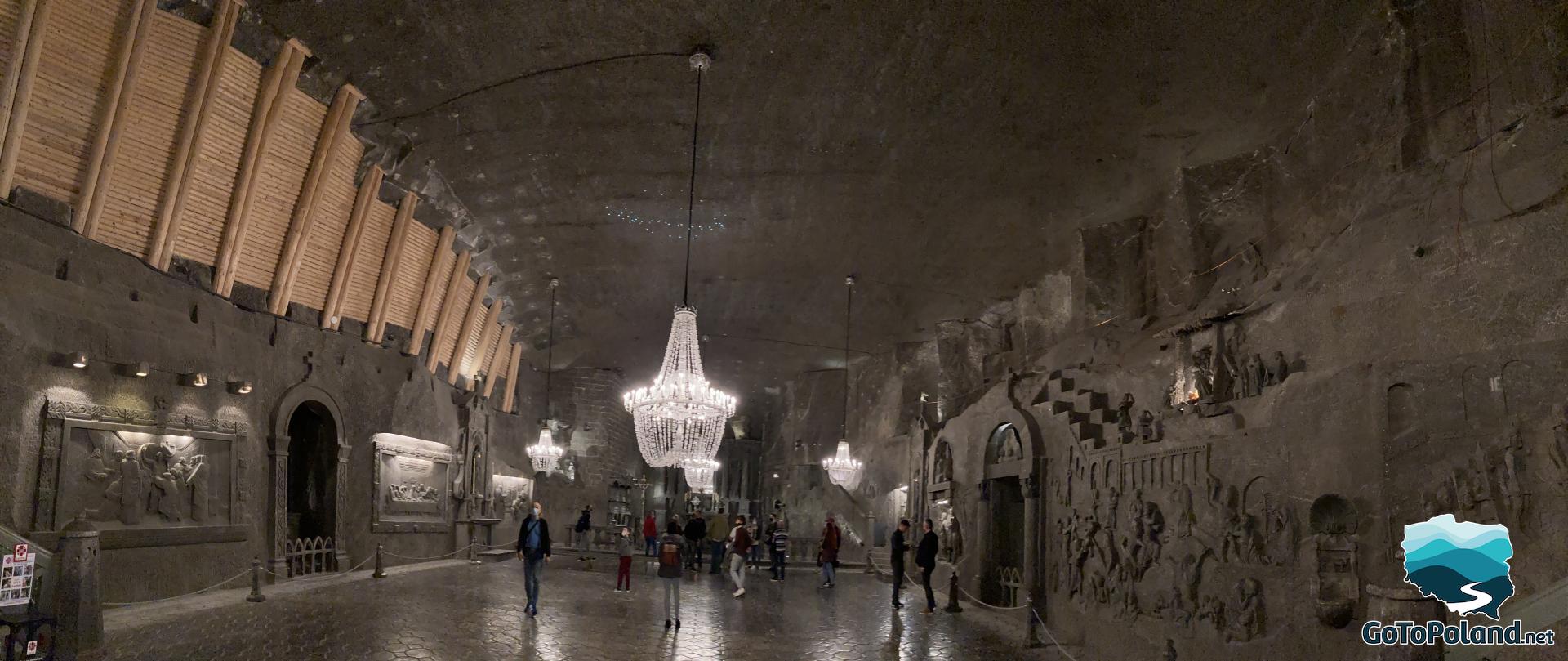
The mine has 9 levels, 245 km of corridors, and its maximum depth is 327 meters. For over 700 years, 26 shafts have been broken in Wieliczka and 9 million m³ of post-mining voids have been dug out. It is a real maze. The Tourist Route takes about 3 hours (including the Krakow Saltworks exhibition), the temperature underground is 17-18 degrees Celsius. The length of the route is 3.5 kilometers, and the maximum depth you can reach is 135 meters. The mine is accessed by about 380 steps to level I - 64 m, level II (upper) is at 90 meters, level II (lower) is at 110 m, and level III is at 135 meters (in total you need to go down after about 800 stairs!).
There is an elevator to the surface from level III (135 m). During the journey, you will visit 20 salt chambers. More than 38 million tourists from all over the world have already visited the mine. Visit Wieliczka Salt Mine with me.
More information about Wieliczka Salt Mine you can find on Wikipedia
How far is it from Warsaw to Wieliczka?
The distance from Warsaw to Wieliczka is 311 km.
How far is it from Krakow to Wieliczka?
The distance from Krakow to Wieliczka is 14 km.
Is the “Wieliczka” Salt Mine on the UNESCO World Heritage List?
Yes. The “Wieliczka” Salt Mine was inscribed on the first UNESCO World Heritage List in 1978.
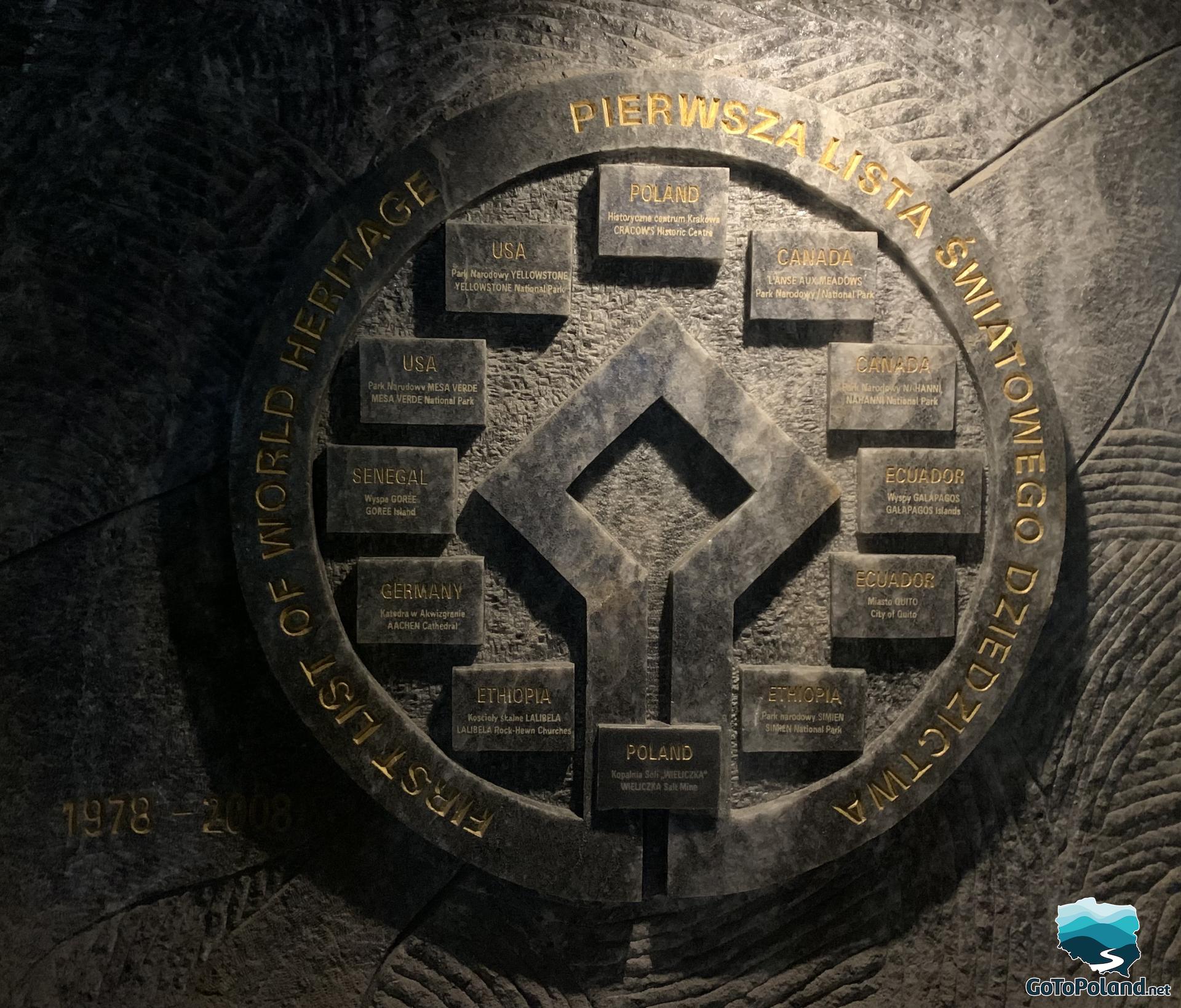
Is there a restaurant in the “Wieliczka” Salt Mine?
Yes, there is a restaurant and in my opinion the food was very tasty when I was there in 2021.
Is it possible to organize a wedding or other event in the “Wieliczka” Salt Mine?
Yes! It is possible.
The “Wieliczka” Salt Mine opening hours.
The route is open from 09:00 to 17:00, and the English-speaking tour takes place from 10:00 to 17:00 every hour.
Can I visit the “Wieliczka” Salt Mine in a language other than Polish and English?
Yes, it's possible. You can choose German, French, Italian, Spanish, Italian or Russian, but for tours in languages other than Polish and English, advance online ticket purchase is required. There are also different entry times. The best way is to check it on the official website of the “Wieliczka” Salt Mine.
Can I stay overnight at the “Wieliczka” Salt Mine?
Yes, you can for example in Słowacki Chamber. The package includes: supper on the day of arrival, underground accommodation, breakfast and visiting the Tourist Route in the Polish language tour. Bed linen is included in the package.
The package can be used by children over 4 years of age.
This time I invite you to go with me under the ground :)

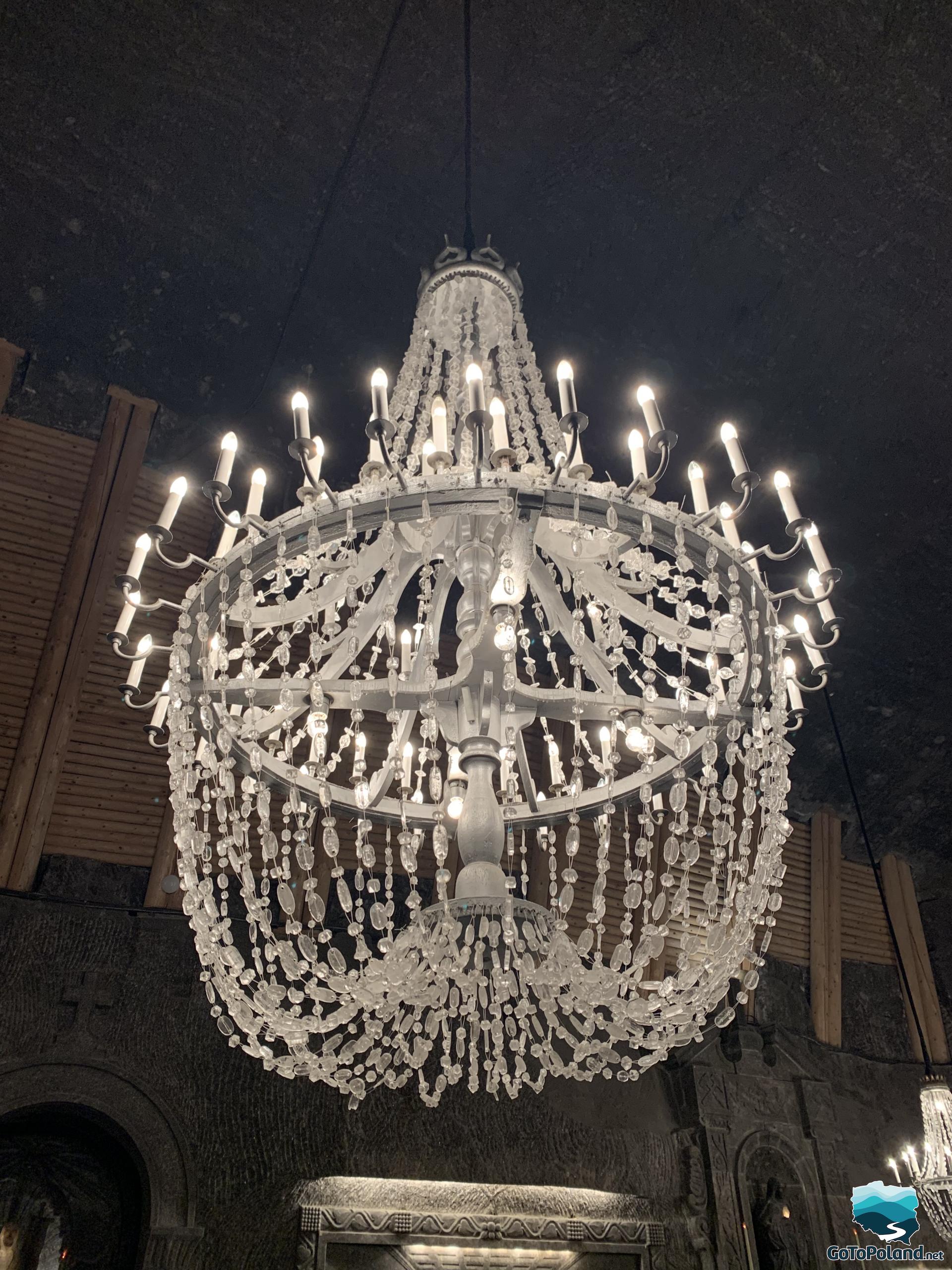
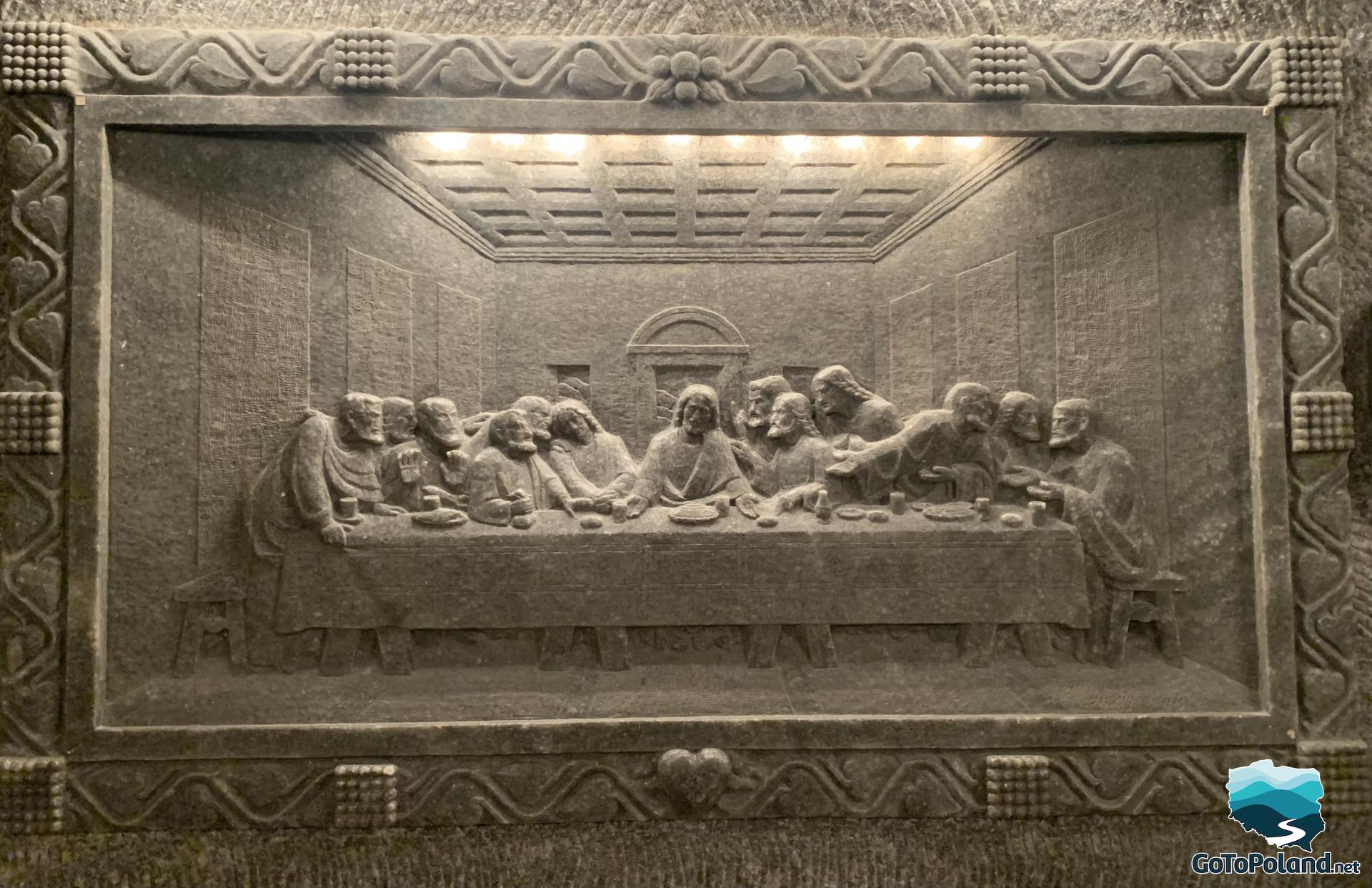
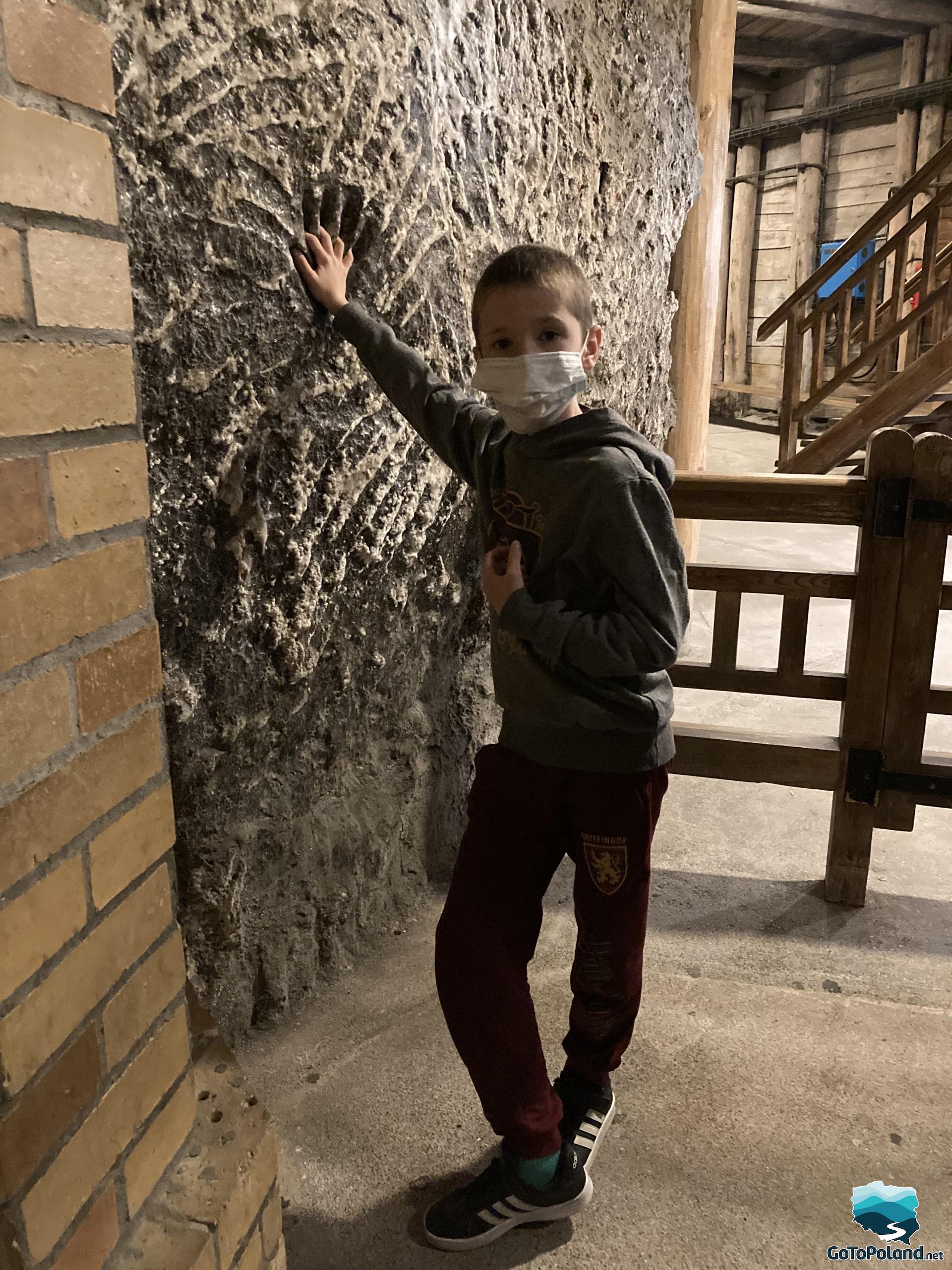 | 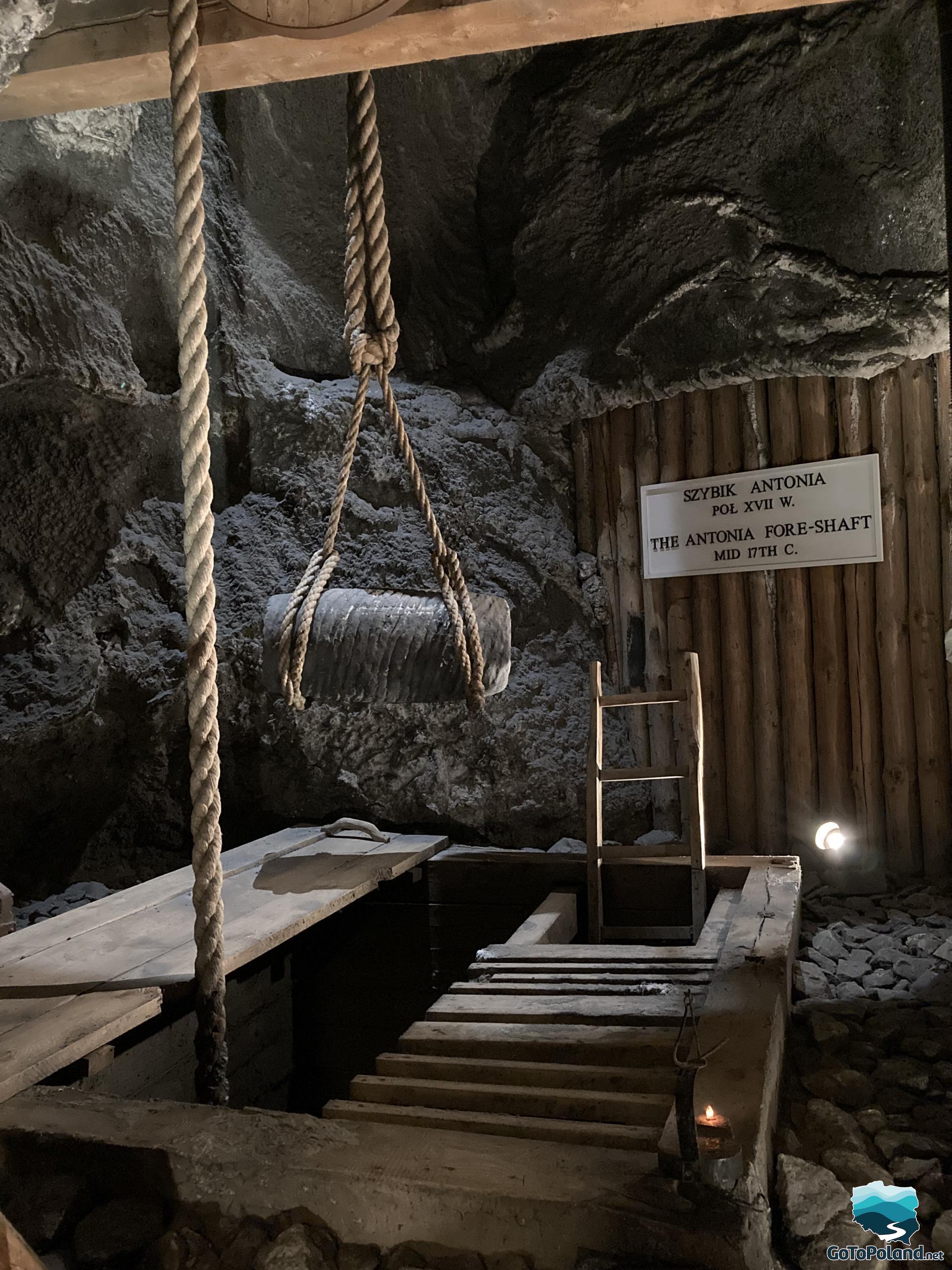 |

The salt chamber of Nicolaus Copernicus. The chamber was built before 1785 - as a result of the exploitation of a lump of green salt. It is a salt containing an average of 95% halite and a small admixture of clay, which gives it a characteristic green colour. The famous astronomer holds the globe in his right hand and his most important work "De revolutionibus orbium coelestium" in his left hand.
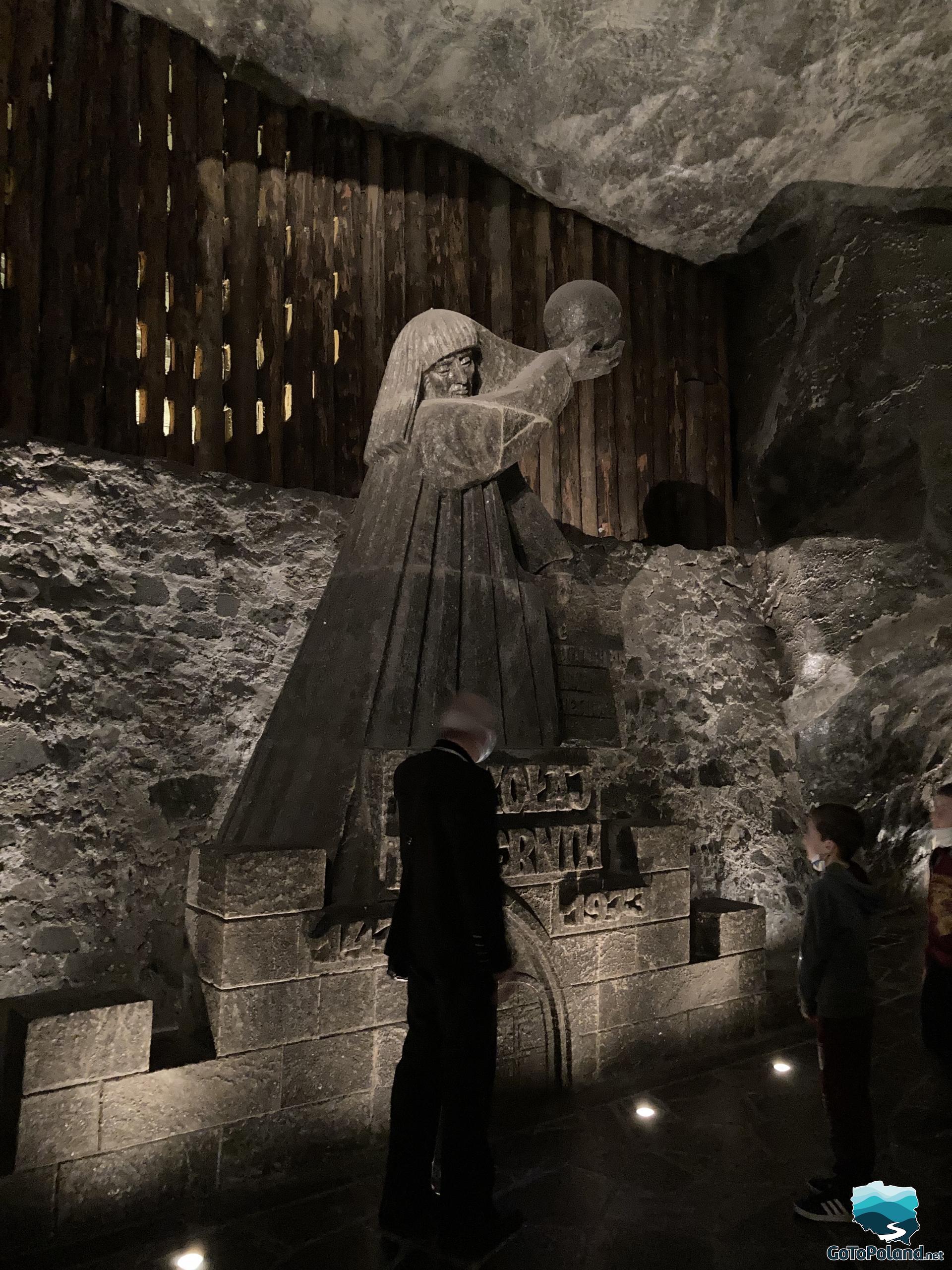
In the Janowice salt chamber from the 17th century, you can admire a group of salt figures depicting the legend of St. Kinga, which is complemented by a story played from the loudspeakers.
Here is the store, in a shortcut. The Hungarian princess Kinga was to marry a Polish prince, but she did not want any precious stones or gold in her dowry. She asked her father to give her salt for her people. Her father gave her a salt mine, but it was too far from Poland. She threw her engagement ring into the mine and went to Poland. During the princess's tour of the lands of the duchy, a lump of salt was found near Krakow, with the girl's ring in it. It was considered as the miracle. It was thought that the precious salt came to Poland with the ring and Kinga. Since then, there is a plenty salt in Wieliczka.
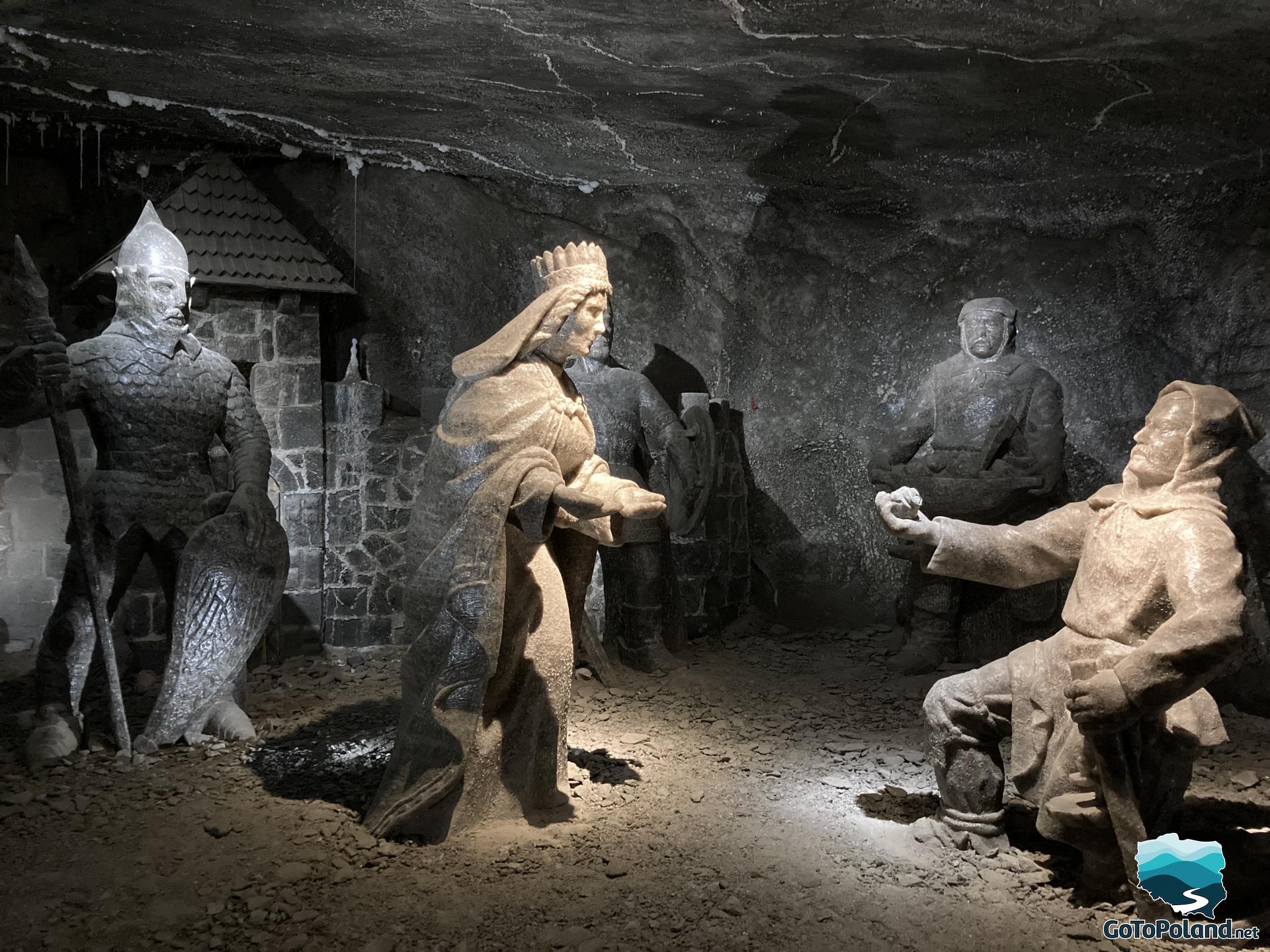
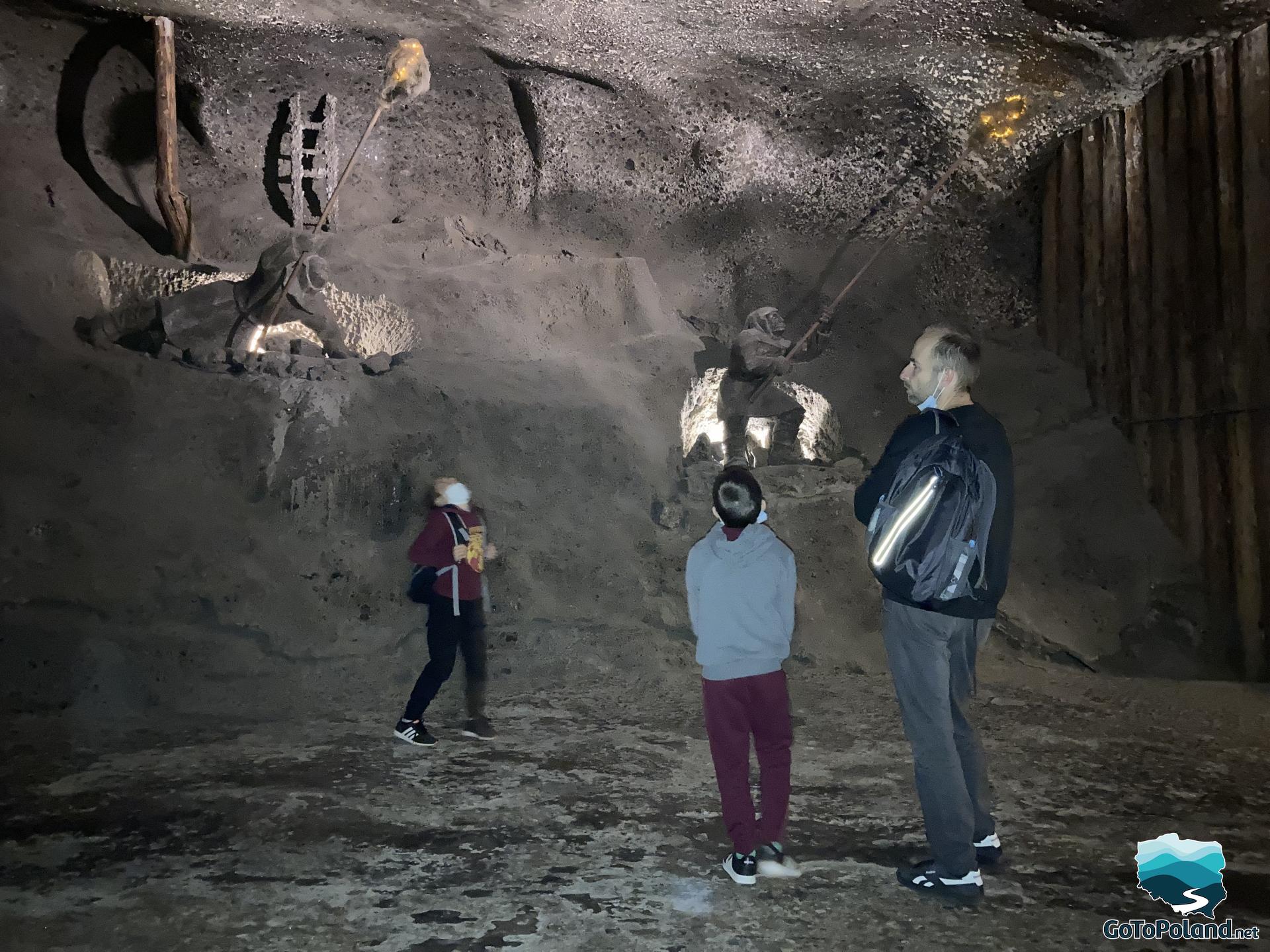
King Kazimierz the Great, in his wisdom, ordered to write down the mining laws. He issued the statute of the Kraków Saltworks regulating the extraction of salt that's why the Krakow Saltworks became a thriving royal enterprise.
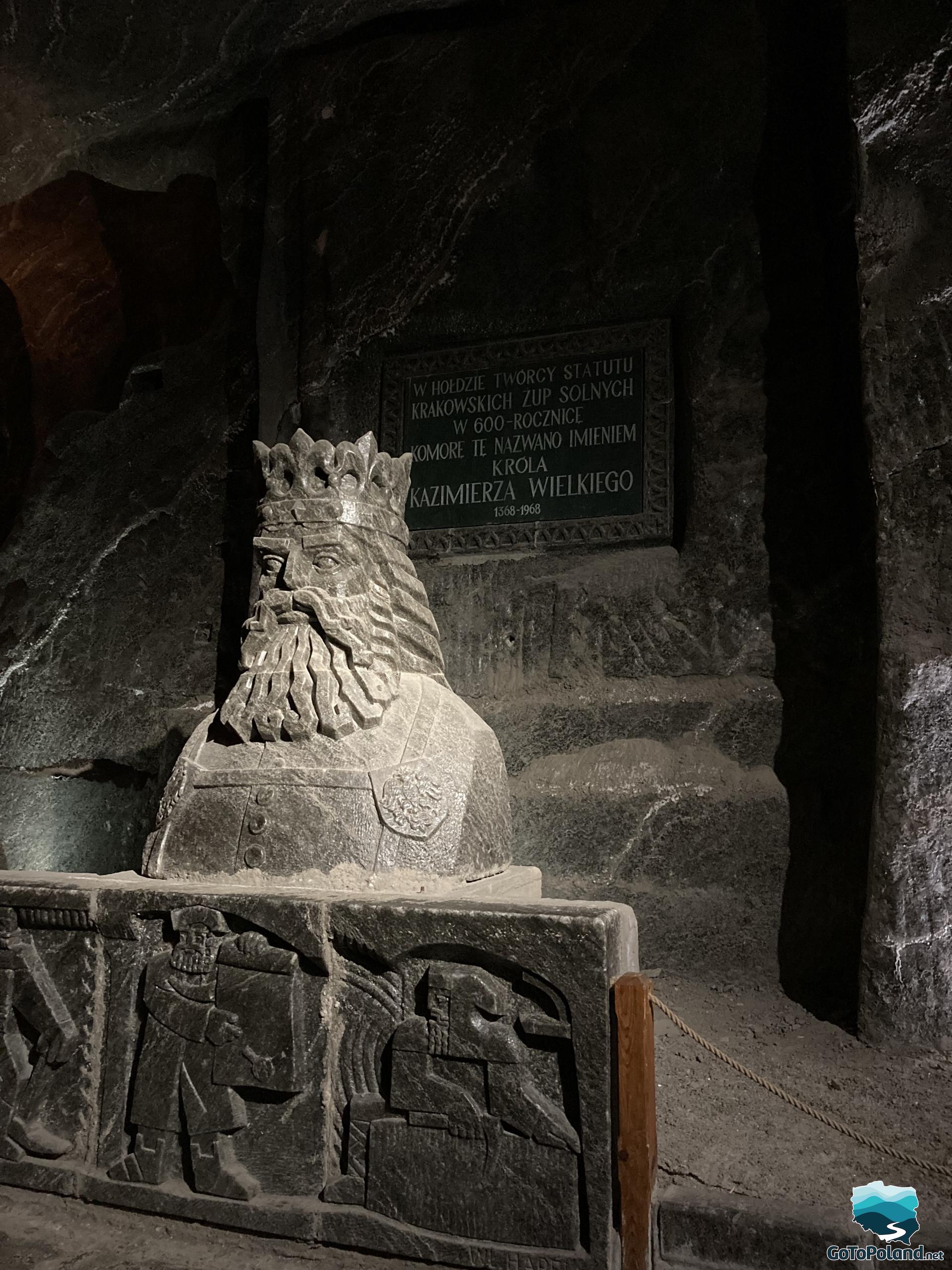
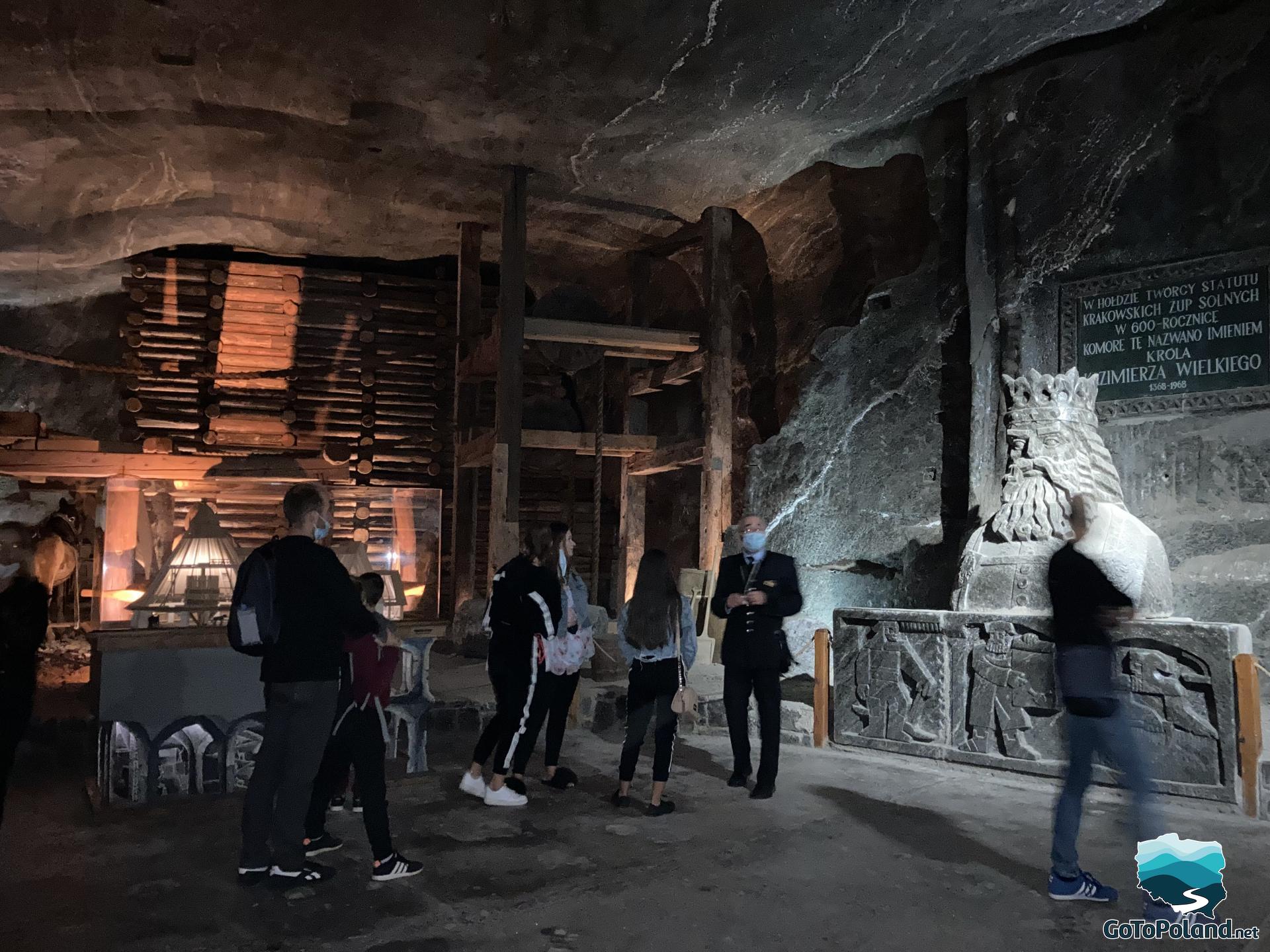
In the prehistoric period, in small clay vessels, on modest hearths, brine was once cooked - salty water drawn from springs.

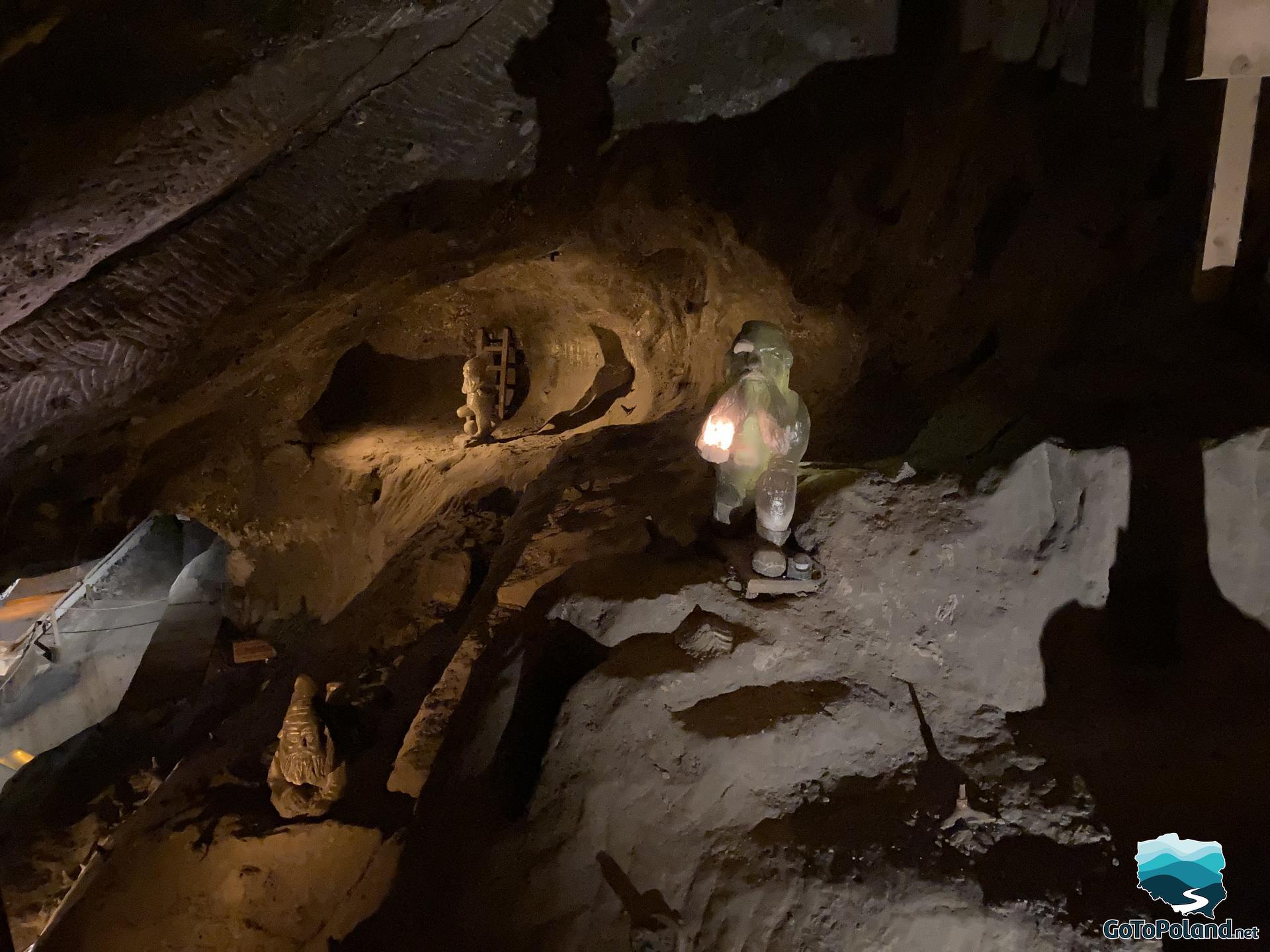
Weimar Chamber and Goethe's Salt Monument.
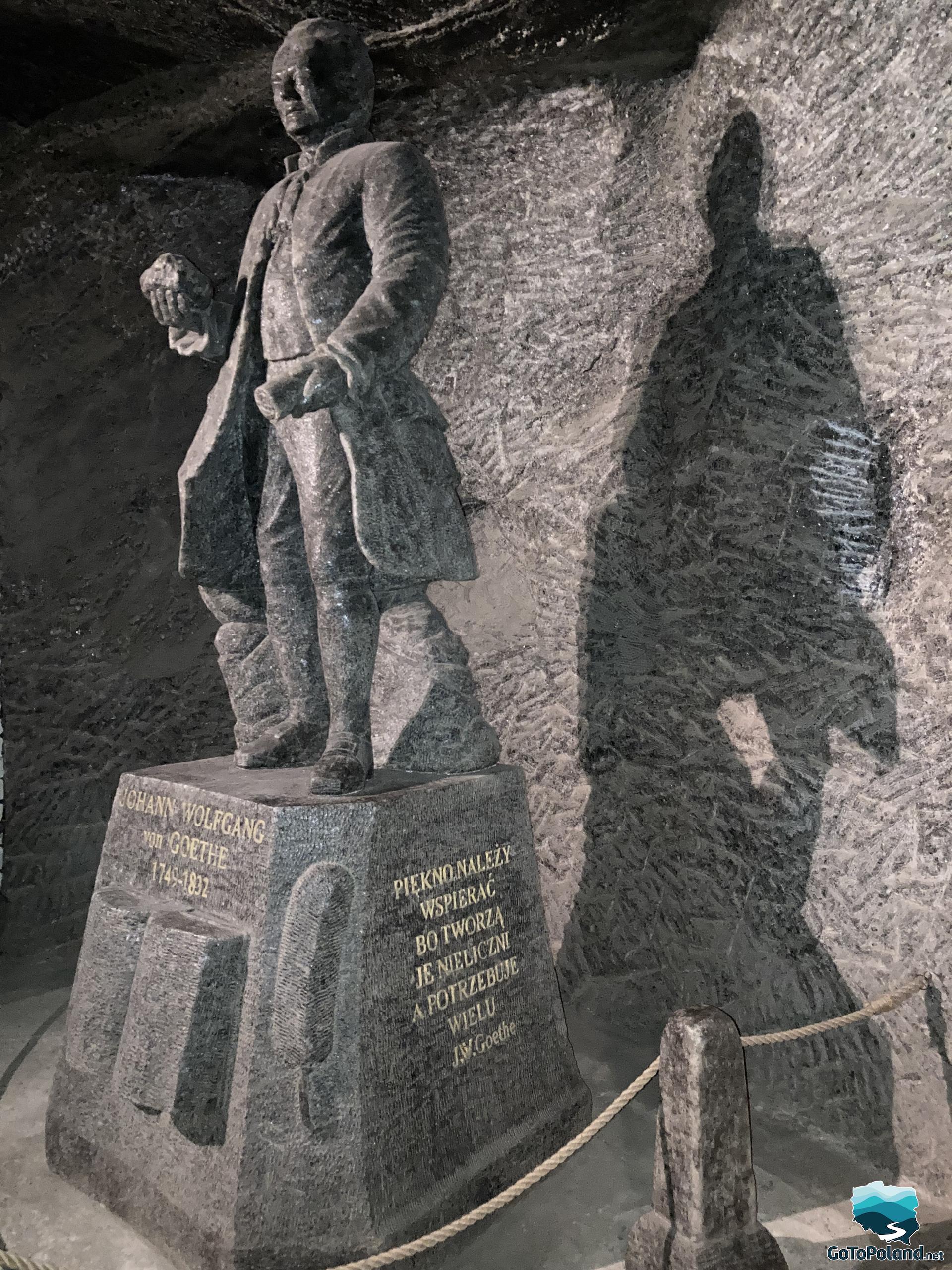
Chapel of St. Kinga stuns with its beauty, it is certainly a pearl among other salt caves. The chamber was built in 1896, in the place of an exploited huge lump of green salt. It is about 12 meters high, 18 meters wide and 54 meters long and actually looks like a royal chamber. The floor is carved in a one salt block, and the ceiling is decorated with intricately made crystal chandeliers made of salt. It is worth knowing that the interior of the chapel was worked on for almost 70 years.
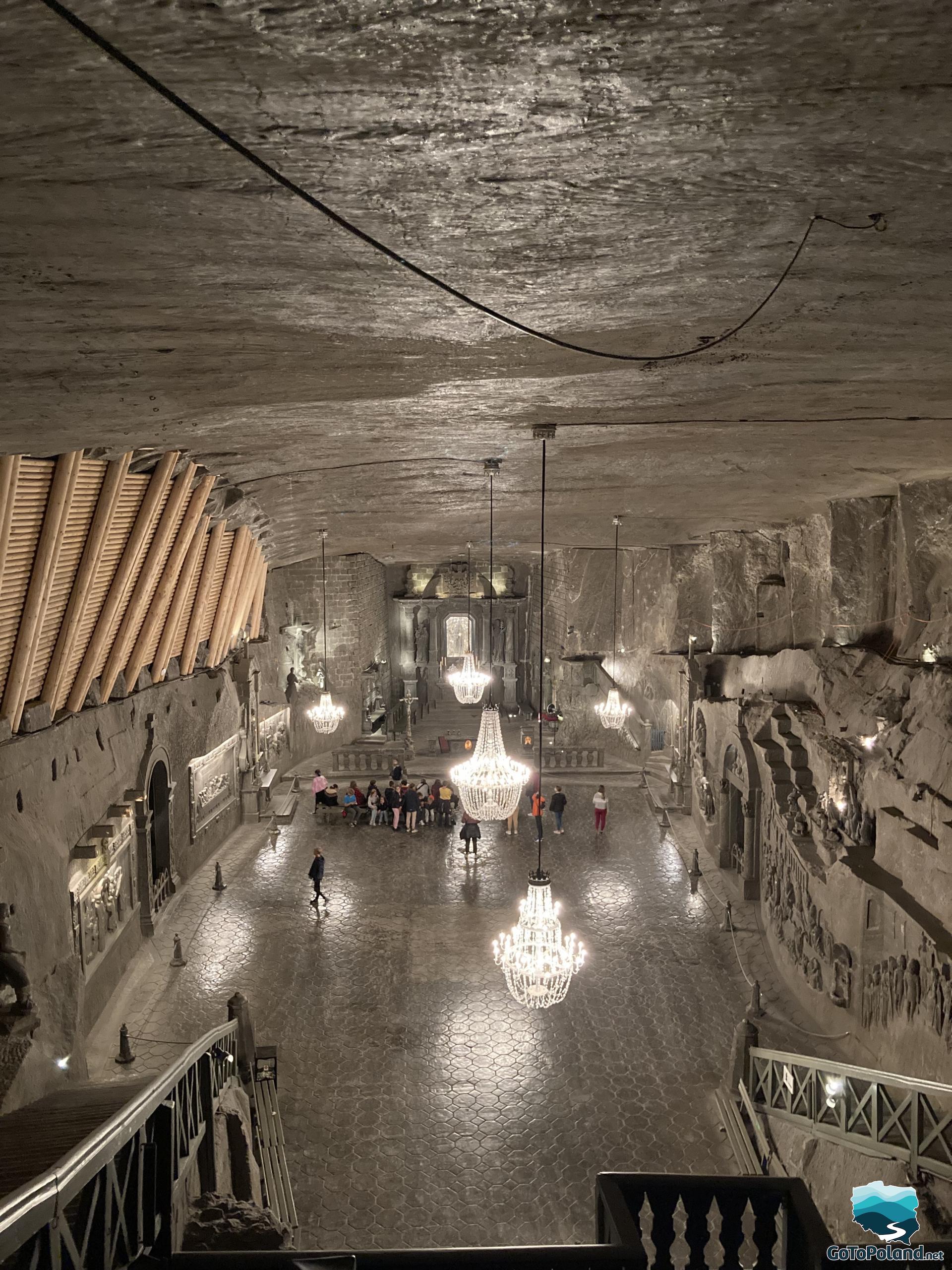
Scenes from the life of the holy family carved in the salt walls.

In the Chapel of St. Cross, as the name suggests, in the altar we will see the crucified Christ. The chapel was called a wandering chapel because the miners moved its equipment closer to the place of their work. At the foot of the altar there are "melting" salt figures of two monks, who were affected by time and conditions (humidity). Opposite the altar there is a wooden sculpture of Our Lady of Victory.
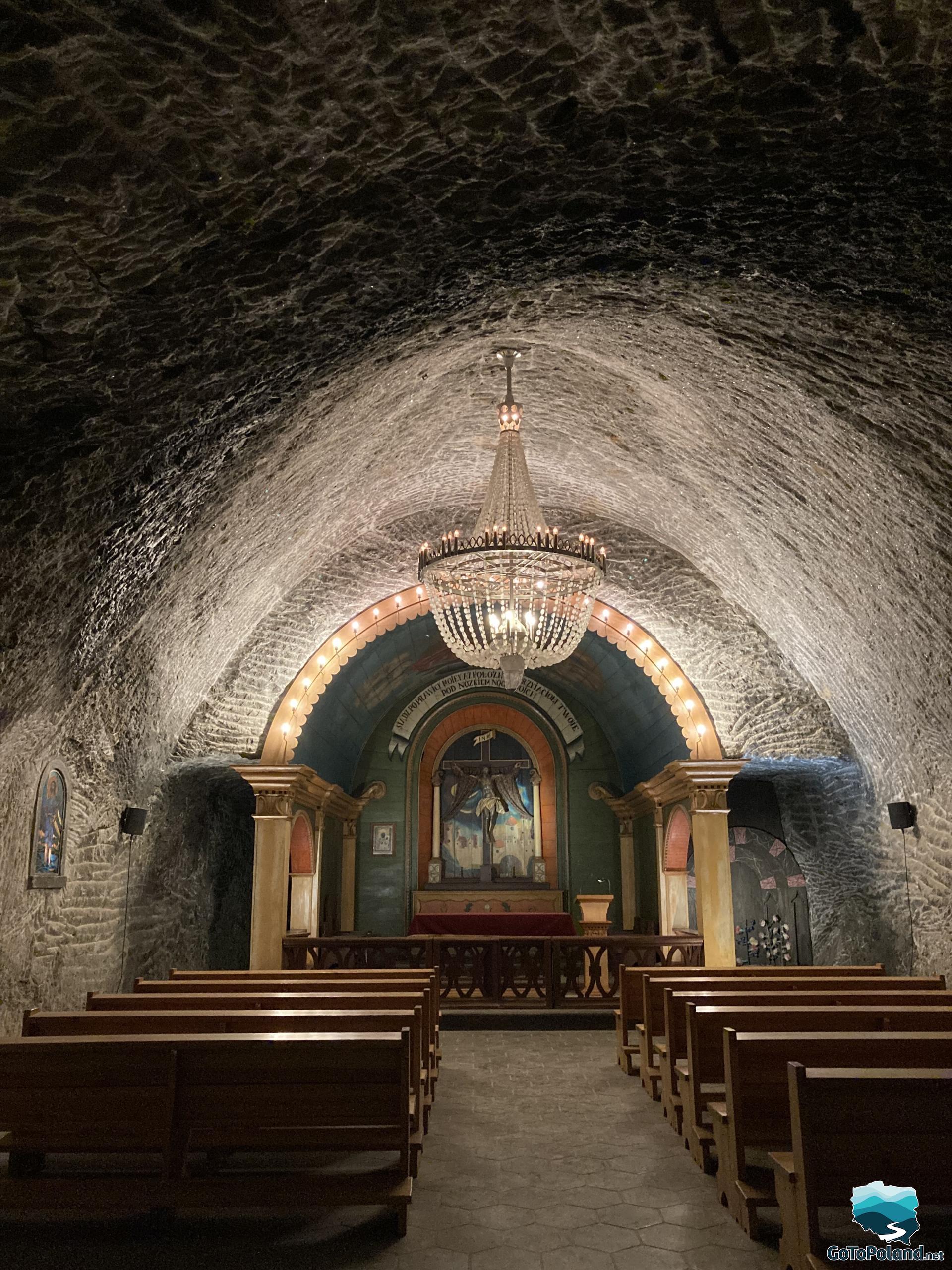
If you think you can't eat 100 meters underground, you're wrong. Great dishes at good prices :)
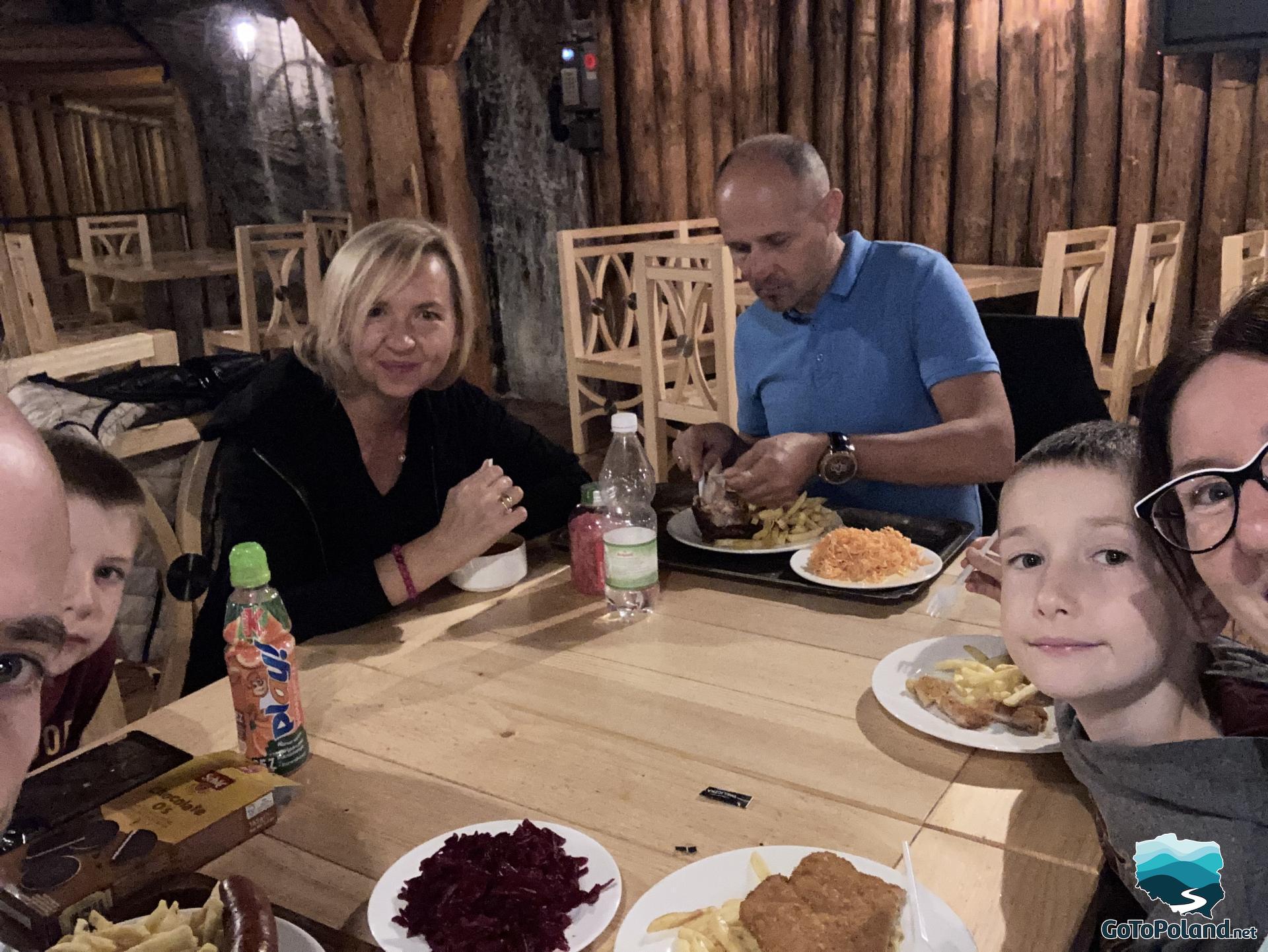
In the salt mine you can organize a party or even a wedding! The Warsaw chamber is often booked for events. The hall is decorated with crystal salt chandeliers and miners carved in salt. The name of the chamber was given in honor of the miners who decided to donate money from the sale of salt to rebuild the capital destroyed after the war.

How to get to Wieliczka Salt Mine?

